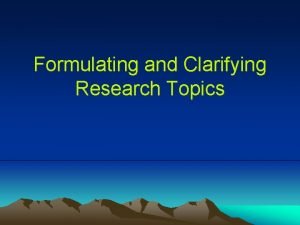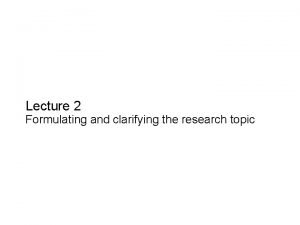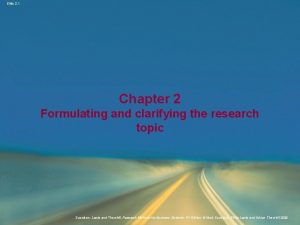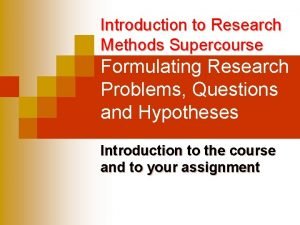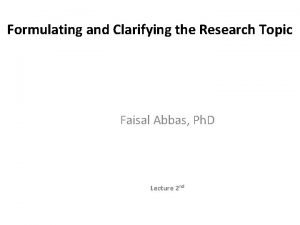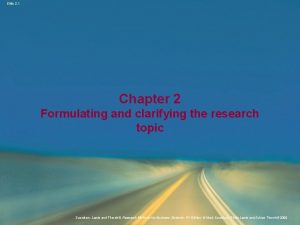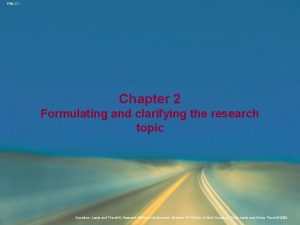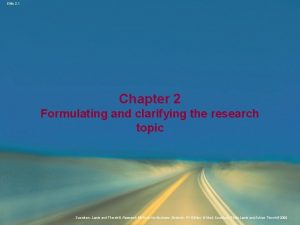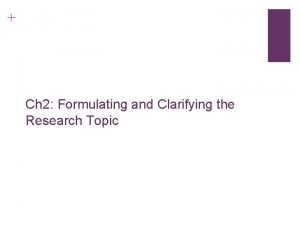Slide 2 1 Chapter 2 Formulating and clarifying






- Slides: 6

Slide 2. 1 Chapter 2 Formulating and clarifying the research topic Saunders et al. , Research Methods for Business Students , 7 e © Pearson Education Limited 2016

Slide 2. 2 Capability: is it feasible? ü Is the topic something with which you are really fascinated? ü Do you have, or can you develop within the project time frame, the necessary research skills to undertake the topic? ü Is the research topic achievable within the available time? ü Will the topic still be current when you finish your project? ü Is the topic achievable within the financial resources that are likely to be available? ü Are you reasonably certain of being able to gain access to data you are likely to require for this topic? Box 2. 2 Attributes of a good research topic Saunders et al. , Research Methods for Business Students , 7 e © Pearson Education Limited 2016

Slide 2. 3 Appropriateness: is it worthwhile? ü Does the topic fit the specifications and meet the standards set by the examining institution? ü Does your topic contain issues that have a clear link to theory? ü Are you able to state your research question(s), aim and objectives clearly? ü Will your proposed research be able to provide fresh insights into this topic? ü Does your topic relate clearly to the idea you have been given (perhaps by an organisation)? ü Are the findings for this topic likely to be symmetrical: that is, of similar value whatever the outcome? ü Does the topic match your career goals? Box 2. 2 Attributes of a good research topic (Continued) Saunders et al. , Research Methods for Business Students , 7 e © Pearson Education Limited 2016

Slide 2. 4 Rational thinking Creative thinking Examining your own strengths and interests Keeping a notebook of your ideas Examining staff research interests Exploring personal preferences using past projects Looking at past project titles Exploring relevance to business using the literature Discussion Relevance trees Searching existing literature Brainstorming Scanning the media Table 2. 1 More frequently used techniques for generating and refining research ideas Saunders et al. , Research Methods for Business Students , 7 e © Pearson Education Limited 2016

Slide 2. 5 Figure 2. 1 Grand, middle-range and substantive theories Saunders et al. , Research Methods for Business Students , 7 e © Pearson Education Limited 2016

Slide 2. 6 Case 2 Gantt chart Saunders et al. , Research Methods for Business Students , 7 e © Pearson Education Limited 2016
